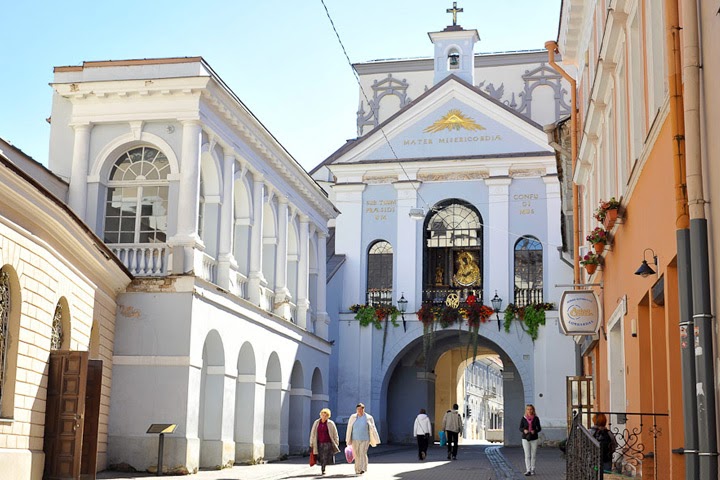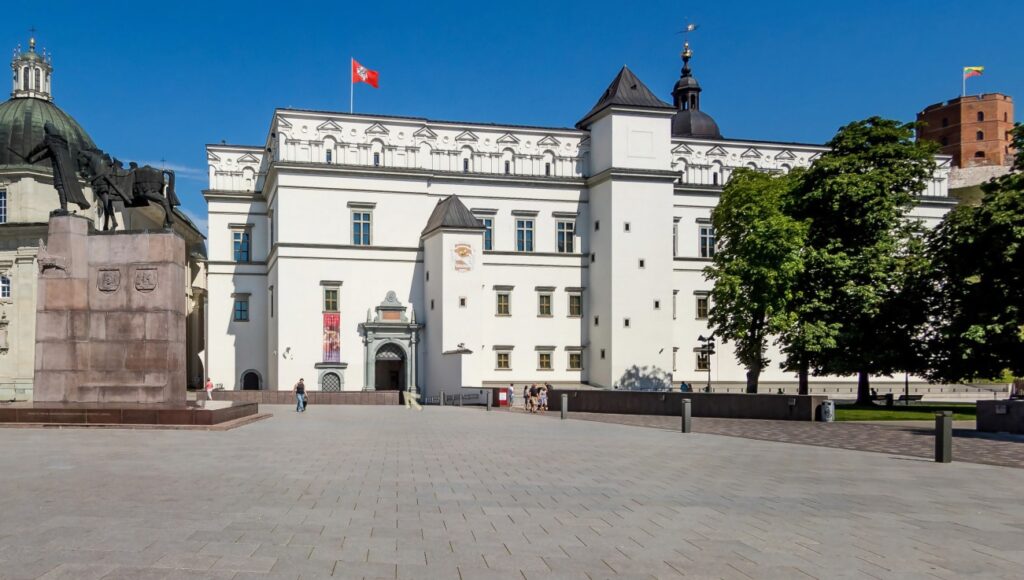Vilnius – A Guide Through the City

The Old Town of Vilnius is situated in a valley between hills where the River Neris and River Vilnia meet. A number of buildings ranging from the 15th century to the 20th century that reflect a wealth of architecture styles have survived in the area.
The network of streets is from medieval times: they are narrow and windy, and often lead one to churches or squares. The Vilnius Old Town was added to UNESCO World Heritage List in 1994.
If you don’t have much time, we suggest that you visit Lithuania’s most important sacral site, which is the Cathedral Basilica. We also suggest you visit the Church of St.Anne, which is masterpiece of Gothic architecture. Walk up to Gediminas’ Tower and enjoy a panoramic view of the city.
Pay respects to the picture of the Holy Virgin Mary, which is considered miraculous and is located at the Gate of Dawn.
GEDIMINAS CASTLE (Upper Castle)

Vilnius has been the official capital of Lithuania since 1323. The rulers of the Grand Duchy of Lithuania resisted in Šventaragis Valley between the Rivers Neris and Vilnia, which is where two castles were located – the Upper Castle and Lower Castle.
The grand duke resided in the Upper Castle and Lower Castle. The Palace was rebuilt in the ornate Renaissance style and adapted for the ruler’s needs. The Lower Castle was surrounded by a defensive wall with four gates and towers. Now the former wall boundaries are marked on the ground with dark bricks. One tower survived, which today is the Cathedral Basilica’s bell tower.
The palace now is rebuilt, historical interiors are being restored, there is a museum operating on several floors, on the national celebration days events are being held here.
CATHEDRAL BASILICA

The Cathedral burned several times and was reconstructed and renovated. It acquired certain features of Renaissance, and later-Baroque.
Construction works were mainly supervised by Italian architects Annus, Bernardo Zanobi da Gianotis, Giovanni Cini and Constantino Tencalla.
In 1623-36 in the initiative of King Sigismund Vasa, the most beautiful part – the Baroque St.Casimir’s Chapel – was erected. In September 1769, the south tower of the facade was destroyed by storm, which caused severe damage to the Cathedral.
A priest and six ordinands were killed under the ruins. Vilnius Bishop Ignacy Massalski commissioned the best Vilnius architect Laurynas Gucevičius to reconstruct the Cathedral.
CHURCH of ST.ANNE

Church of St.Anne – it is a unique monument of red brick Gothic architecture. It is thought that the church was built at the turn of the 16th century, similar to that of the nearby Church of St. Benrardine, but with different workers.
The Church of St.Anne is symmetrical, marked by graceful, pointed forms that continue upward, showing the struggle of the human soul toward m God that is characteristic of gothic architecture. There are different levels to the fascinating spatial forms and architectural elements. 30 different kinds of brick were used help in creating this image. The church is small. A bell tower stands nearby, however upon closer inspection, it is different from the church, as it was built 400 years later.
You can see the Three Crosses from many points in Vilnius. They seem as if they are guarding the city marking the place where the first Christians were murdered. Erecting crosses on this hill is an ancient tradition, and did not disappear even when it was blown up during the years of Soviet occupation. A wonderful panorama of Vilnius opens up from the hill. The steep wooden steps take one there from the River Vilnia and Bernardinų Garden.
THREE CROSSES

Three crosses stand on the hill, which was earlier called Kreivasis (Kreivoji Castle stood there, which was destroyed in 1390).
According to legend, pagans killed 7 Franciscan missionaries here in the 14th century. They were buried in that place, and a small chapel was built there.
Wooden crosses can be seen in 17th century drawings of the city. Cement crosses were erected by architect A.Wiwulski in 1916, however they were blown up by the Soviet government in 1951. Crosses were re-erected there in 1989.
The Three Crosses are on Vilnius’ highest hill, and can be seen from various points in the city.
TV TOWER

TV tower is the tallest structure in Vilnius at 326.5 meters high. There is a cafe and observation deck located in the top ring of the building, which is 165 meters high. It does a complete 360 degree turn once every hour.
You can see up to 50 km away from the tower. The tower, decorated with Christmas lights, becomes the largest Christmas tree in Europe each year.
The crosses the entrance and photo exhibition on the first floor is devoted to the 14 people who were killed during the tragic events of January 13th, 1991 as the TV tower was being defended against the Soviet army.


